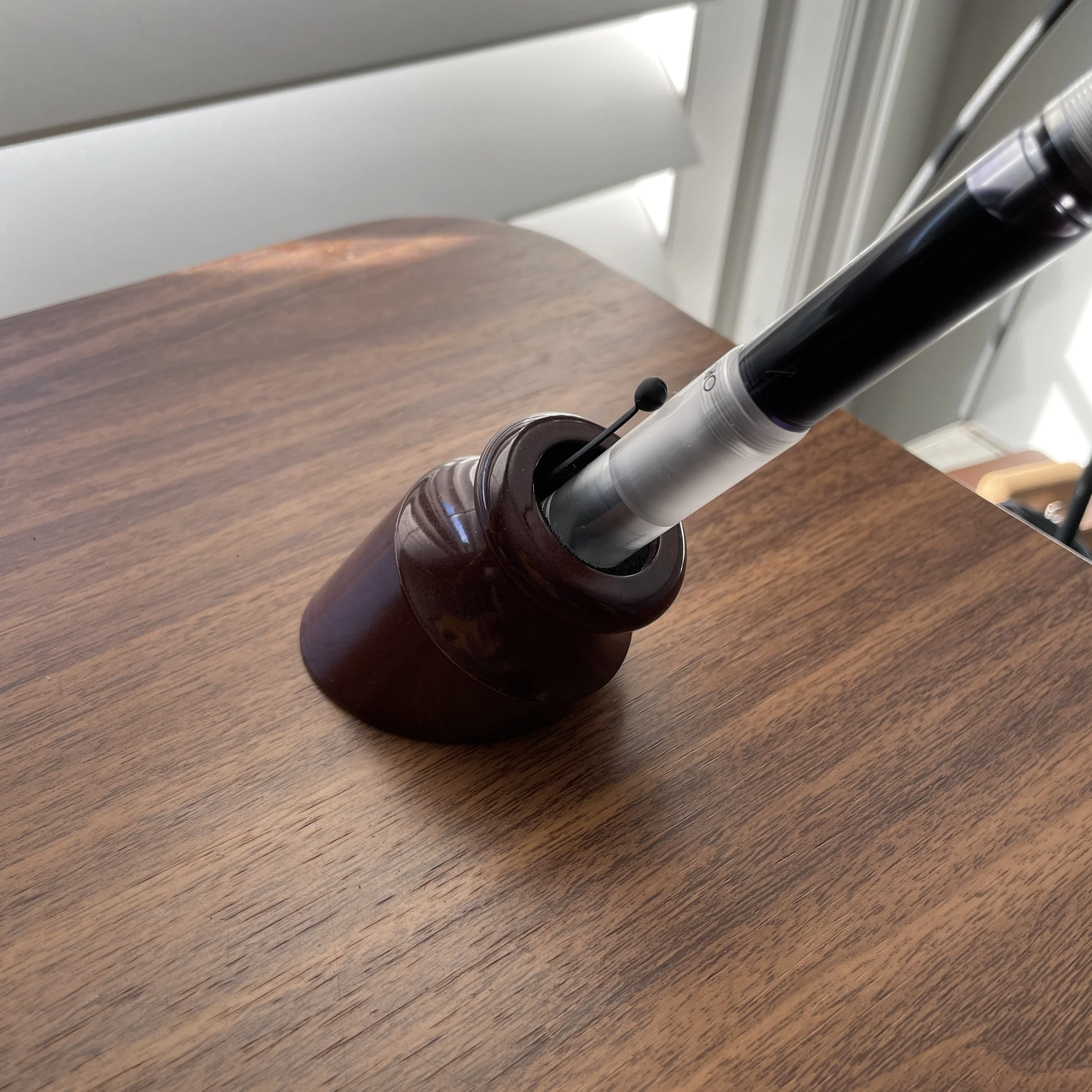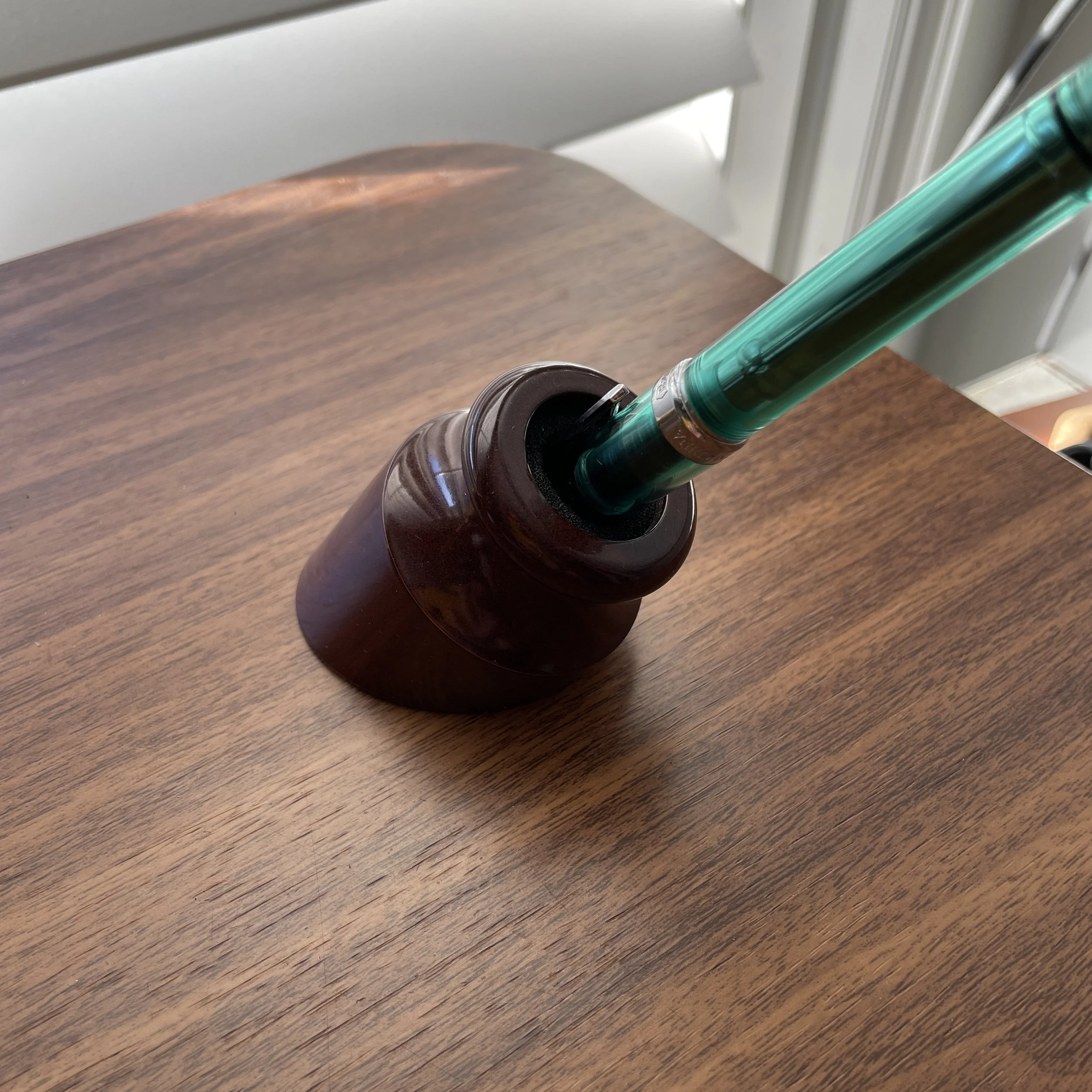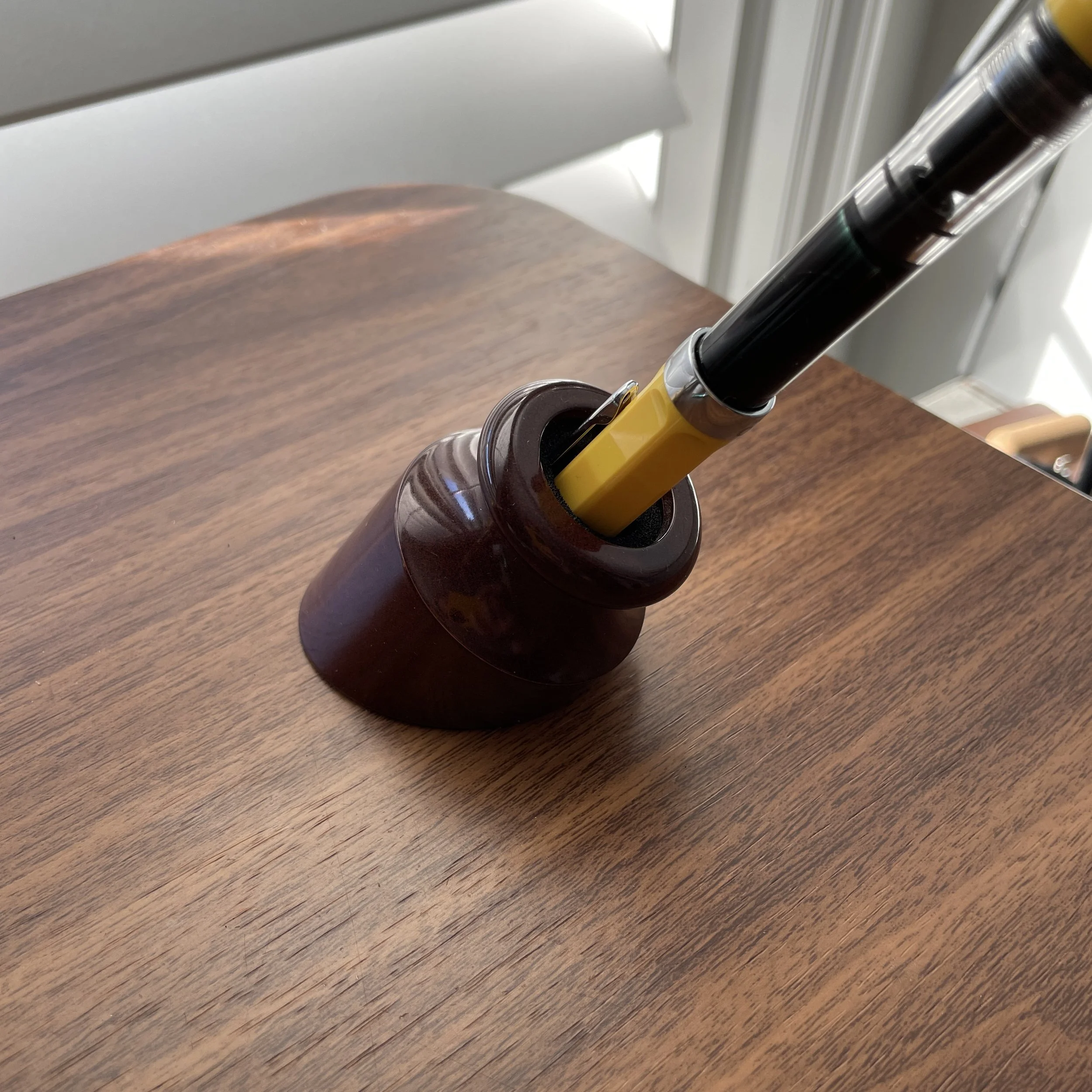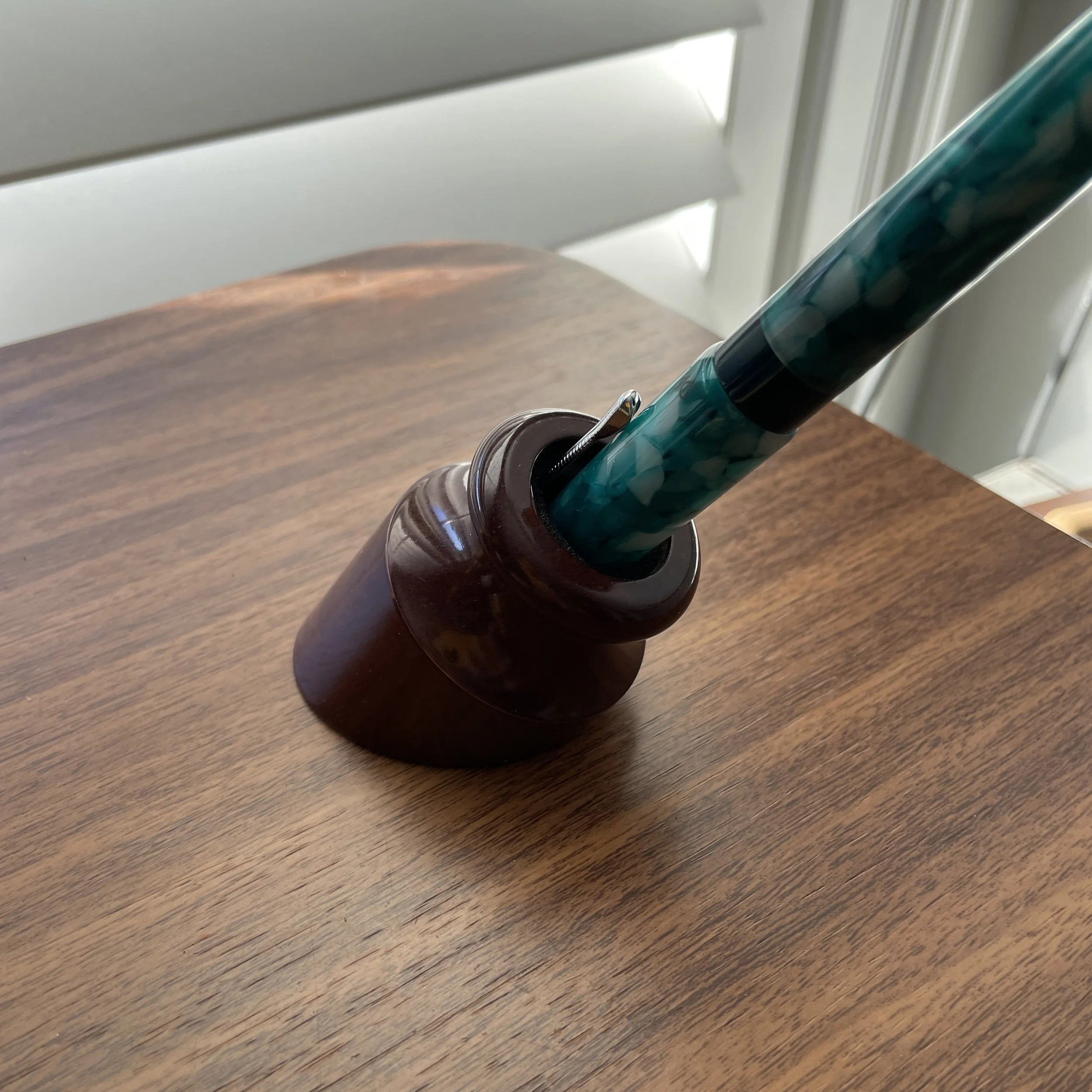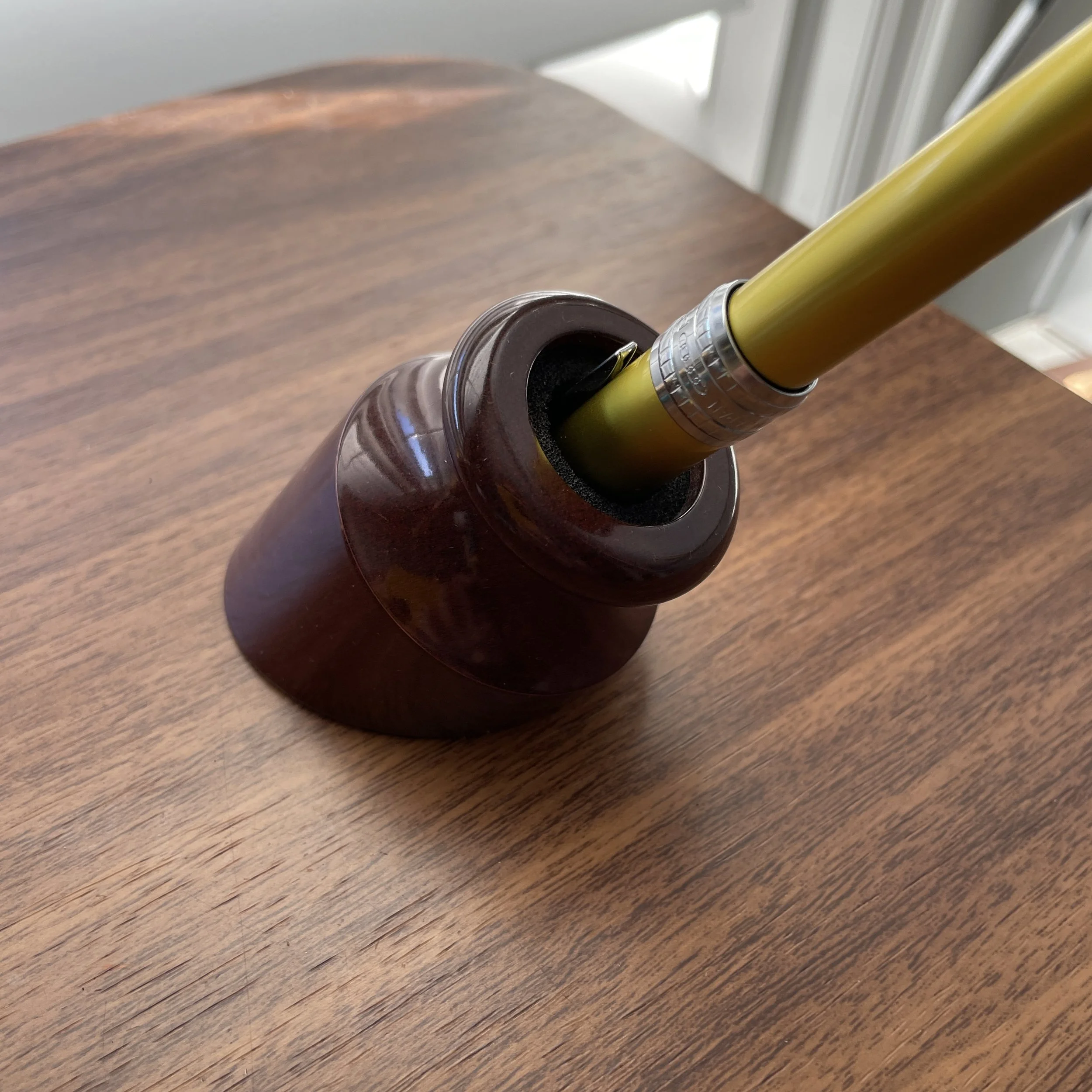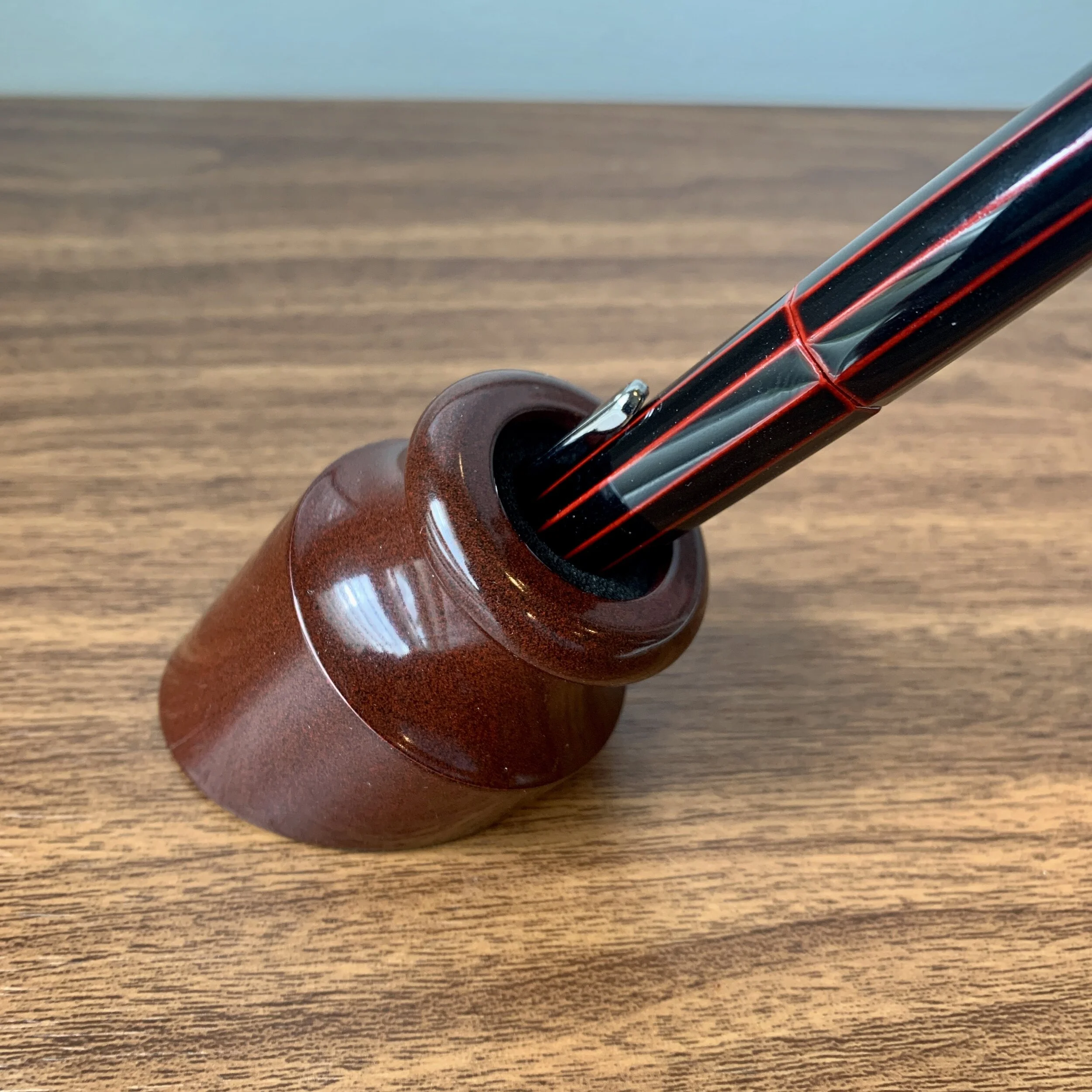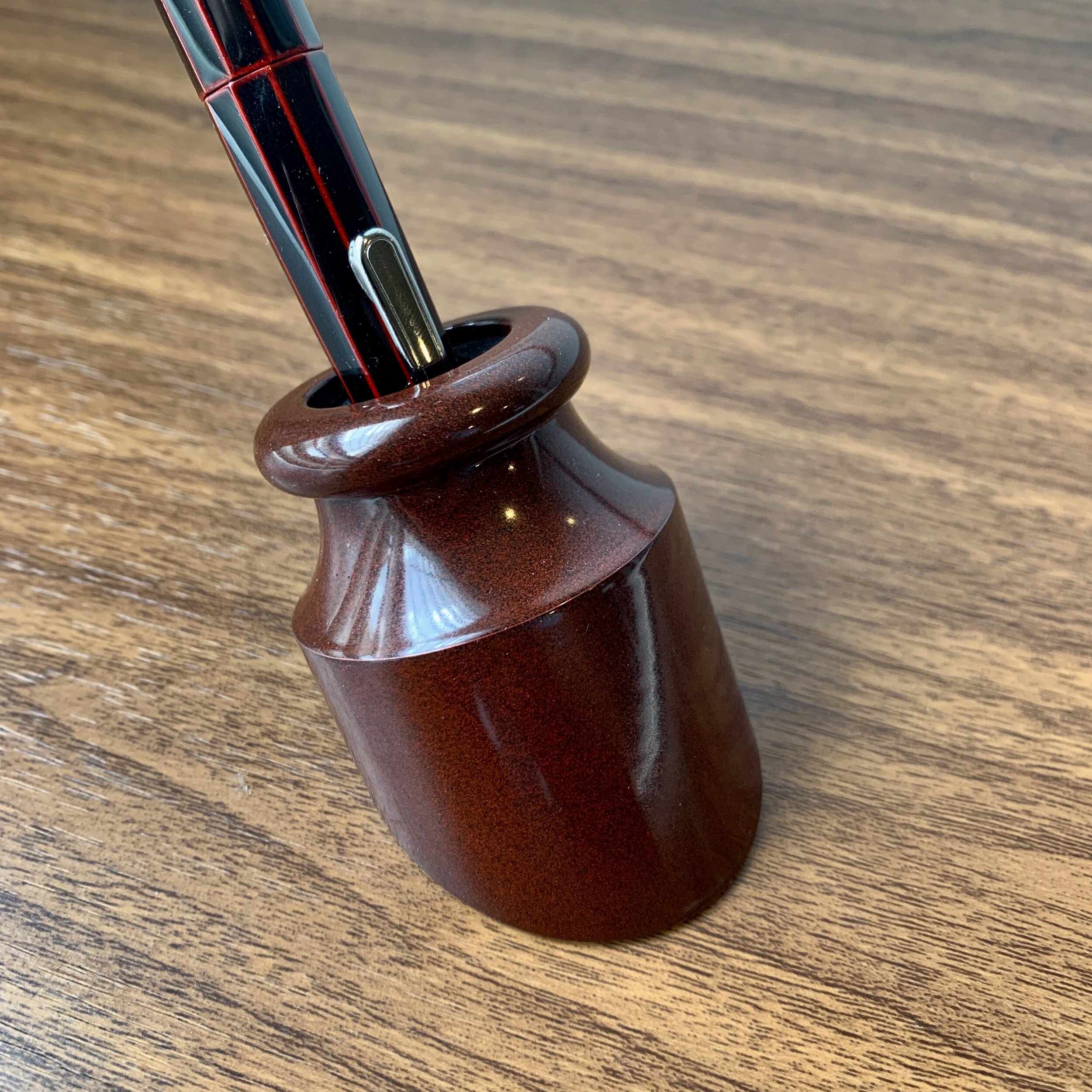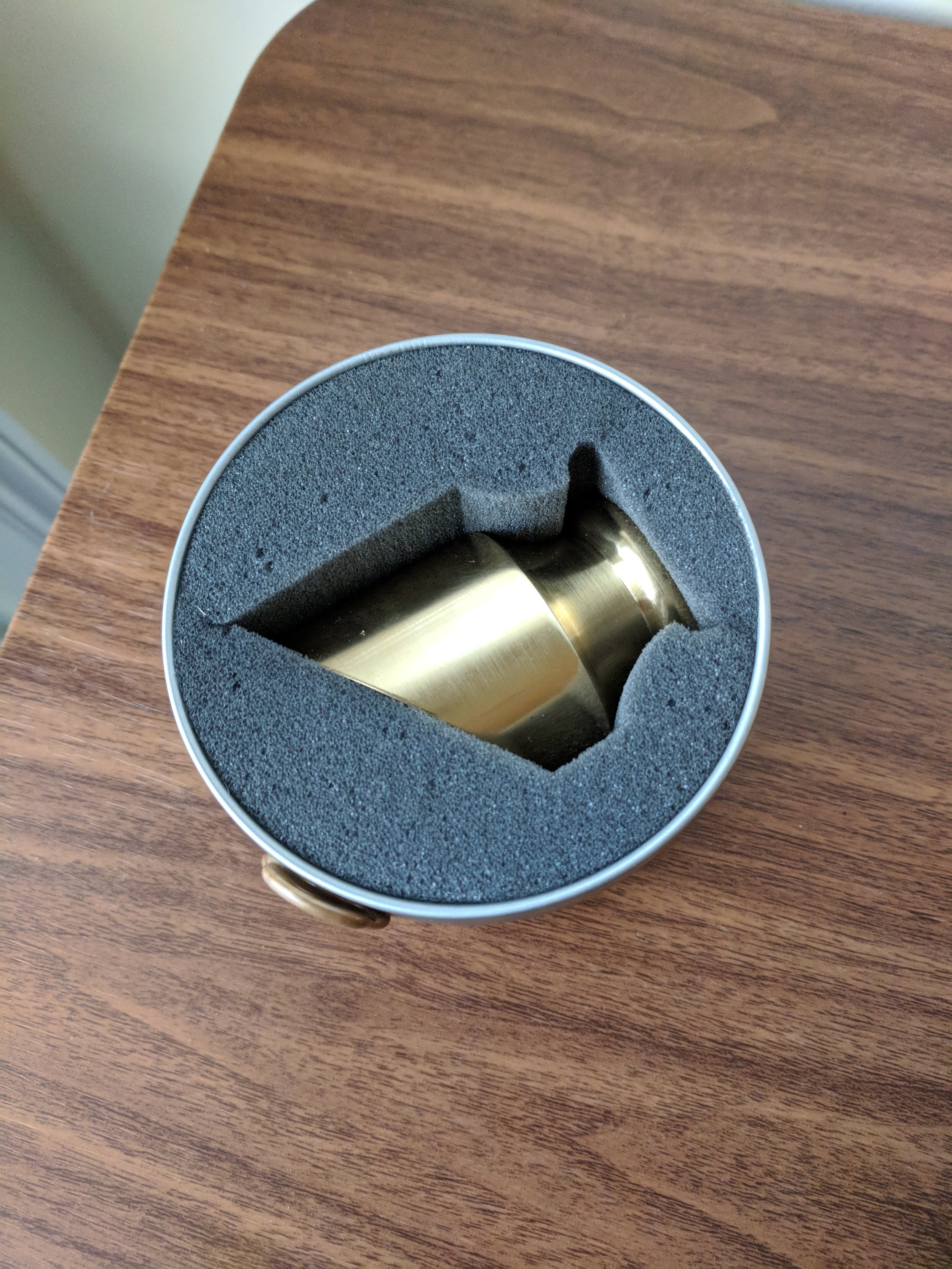It’s been five years since Penwell Co. (since renamed Good Made Better as they’ve expanded their range of goods) introduced the Penwell, a thoughtfully engineered desktop pen stand designed to allow you to enjoy the “desk pen” experience with any fountain pen or other capped writing instrument. I’ve received a few questions over the past two weeks regarding how exactly the Penwell works and how I use it, so I thought it might be fun to do a “review revisited” post.
I have two Classic Penwells: one in the brass finish, and one in our exclusive “Aged Red”.
The beauty of the Penwell is that it’s such a simple product. It consists of three parts: (1) the base, available in a variety of materials and finishes; (2) a foam insert, which secures the pen cap, and (3) a microsuction pad that adheres to your desk or other surface. The Penwell’s base does not use any sort of adhesive, but rather thousands of tiny microscopic suction cups. I have two different Penwells that I’ve used for years, and despite moving them around multiple times, I’ve never had the microsuction pad damage the finish on any surface, nor has it lost any of its stickiness. If you find the Penwell coming loose or sliding around, all you typically need to do is wipe the microsuction surface with a damp cloth and you’re good to go.
The foam insert is flexible enough to accommodate pens of varying sizes. While I’ve been able to use nearly all pens with the standard foam insert (which ships with our Aged Red Model), if you have an especially large pen you can purchase a thinner XL foam sleeve for $5 directly from Good Made Better.
As I noted in my original review, I love that the Penwell gives me the ability to “park” my pen cap-down while I’m working, especially with larger pens that don’t post. One reason that I post my pens is that I get (justifiably) nervous about the cap getting knocked off the desk onto the floor, and my strategically placed Penwells give me peace of mind. The Penwell base holds the cap securely, so you can uncap your pen one-handed and easily recap when you’re finished writing, as you would with a traditional desk pen. Currently, I have one Penwell stationed on my main desk in my home office, and another on each standing desk, at home and in my office downtown.
The Penwell microsuction base on a two year-old Penwell. For a demonstration of how to use the pen holder, check out this Instagram video.
I’ve always loved the idea of a dedicated desk pen, especially some of the more lovely vintage sets, but the bases tend to have a large footprint and the pens themselves aren’t especially versatile, featuring long tapers and low ink capacity. With the Penwell, you can use your pen of choice in “desk pen mode”, and then pull it out to take it with you when you move away from your desk. That said, I sometimes use my larger Opus 88 eyedroppers, such as the classic “Demonstrator” pens, as semi-permanent desk pens when they’re inked. They hold so much ink that if I’m on a busy streak at work and don’t want to worry about refilling, I can park them in the Penwell and keep a fountain pen at the ready, which is convenient for those days when I accidentally leave my pen case at home. Below I’ve included pictures of the Penwell with fountain pens in different sizes, to showcase the versatility.
Takeaways and Where to Buy
Years later, the Penwell is still one of my most-used desk accessories, which is notable because I tend to cycle through things and “redecorate” my workspace often. There are very few constants on my desktop. I expect the appreciation for this product is widespread, given that Good Made Better has expanded over the years and become a fixture at pen shows.
Here, I liked the Penwell so much that it was my first choice for a product collaboration back in 2020 when I launched the T.G.S. Curated Shop. In addition to our own special-edition Penwell in the T.G.S.-exclusive “Aged Red” finish, you can purchase other Penwells directly from the Good Made Better website, along with a range of other desk accessories designed to make your work more enjoyable, including the recently released “Bookfellow” book weight. The Penwell Classic (which remains my preferred model) comes in a variety of different finishes, though you may also want to check out the larger Penwell Craftsman and the portable Penwell Traveller.
The T.G.S. Curated Shop is an authorized retailer of certain Penwell products. This post does not contain paid third-party affiliate links. T.G.S. is supported entirely by purchases through the T.G.S. Curated Shop and the T.G.S. Patreon Program.
